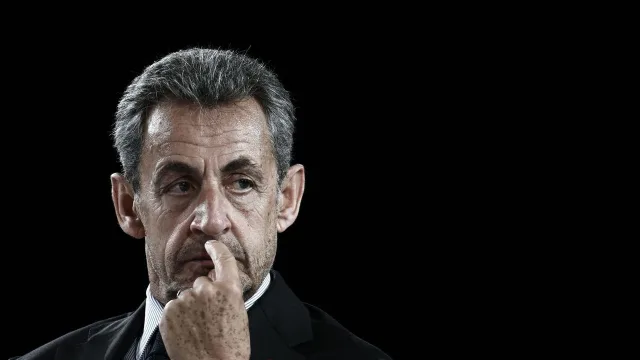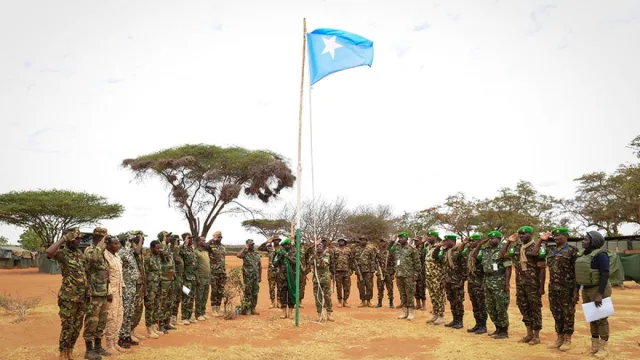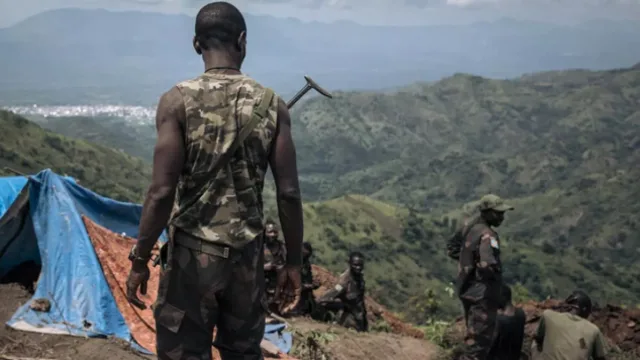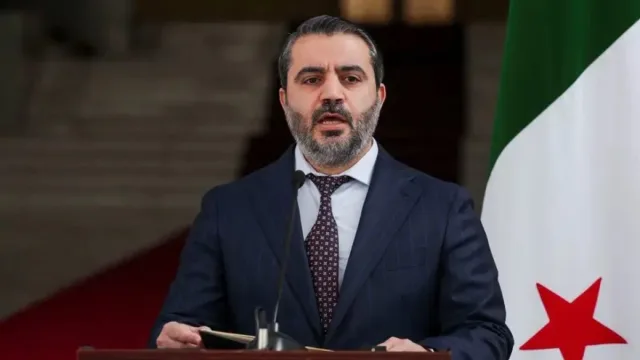As Trump considers withdrawing US troops from Somalia, Somali analysts believe this is dangerous rhetoric which…

As Trump considers withdrawing US troops from Somalia, Somali analysts believe this is dangerous rhetoric which has more to do with domestic politics than security in Somalia and the wider region.
On October 13, Bloomberg reported that US President Donald Trump asked the Pentagon to develop a strategy to withdraw troops from Somalia where they support the Somali government’s fight against Al Shabab with a “quasi-coalition” that also includes the EU, the UK, the AU and Turkey.
Following the emergence of the report, the Somali president tweeted, “a victory through this journey and for Somali-US partnership can only be achieved through continuous security partnership and capacity building support.”
This comes on the back of a tweet where President Trump declared that US troops serving in Afghanistan would be “home by Christmas!” as part of his wider policy to bring a halt to the country’s overseas “endless wars”. He elaborated his position, which has struck a chord with US voters in an ABC town hall, where he said, “I’m bringing our troops back from Afghanistan. I’m bringing our troops back from Iraq. We’re almost out of almost every place.”
Somalia was declared an “area of active hostilities” by President Trump in early 2017, with AFRICOM describing Al Shabab as “the most capable terrorist group on the African continent in terms of the ability to potentially threaten Western interests regionally.”
This assessment isn’t unearned. Though Al Shabab is facing a Somali military which is more capable than it has been since the days of the Barre government – which has increasingly taken an offensive posture – AMISOM & a US drone campaign, Shabab remains a dynamic and adaptive foe.
The organisation has maintained its tempo, with a recent IED attack that it says demonstrates that the federal government hasn’t totally secured “Mogadishu’s major arteries.” The attack targeted the Director General of Immigration and Naturalization Directorate of Somalia, Mohammed Aden Kofi, who escaped.
Al Shabab was able to recapture Leego in late October, after the SNA briefly took the town before retreating to the Baledogle Airfield. The group also killed thirteen Somali soldiers when the SNA attacked them near Afgoye, northwest Mogadishu. They also claimed to have captured four towns in the Sanaag region, in the country’s north.
“Al-Shabaab remains a dangerous network that requires international pressure placed on its leadership, fighters, economic streams, and broader ambitions of destruction” said US Africa Command in an email to TRT World.
“U.S. Africa Command’s contributions continue to help contain Al-Shabaab’s violence and ambitions.”
Taking the fight to Al Shabab
Roughly between 650-800 US troops work in Somalia, which include special operations units that support AMISOM’s peacekeeping mission and the Somali National Army with training, intelligence and aerial support, and occasionally also conducting kill-or-capture raids.
The US has been critical in funding and training the Danab forces, an elite Somali Special Operations Force which is leading the battle against Al Shabab. Danab is currently over 700 men strong. “I would say most of the time they are able to go out on their own and perform missions on their own,” Brig. Gen. Miguel Castellanos told Military Times. The goal he said is to develop Danab to 3000 men.
The Danab forces have been very effective in taking the fight to Al Shabab, killing Abdirahman Abdulla, one of the group’s Financial Controllers in Afgoye in late October.
Whilst Abukar Arman, a former Somali Special Envoy to the US believes the American bombing campaign has strengthened Al Shabab, he told TRT World, “withdrawal of American troops is campaign rhetoric that should not be taken seriously.”
“On the humanitarian front the US has contributed significantly,” Arman continues. “Likewise on the military front, but here is the irony: a decade of bombing has only made Shabab stronger.”
The group has always been an agile and shape shifting enemy, which, despite increased effort by Somalia’s international partners, has been able to maintain its insurgency, and has even made gains financially, reportedly collecting more tax than the Somali government.
“Al Shabaab is not only a terrorist organisation, but it is also an effective administrative system that ‘gets the job done’” writes Professor Abdi Ismail Samatar, a specialist on Somali affairs. Whilst he recognises that there have been territorial gains, Al Shaba, he continues, often retreats, “but its network of operators remain inside the ‘liberated” areas to intimidate the population.”
This leads Hassan Sheikh Ali Nur, a Professor of International Relations at the Somalia National University, to conclude that the US is unlikely to withdraw from Somalia.
A former National Security Advisor to Somalia’s last president as well, Nur tells TRT World, that “the US military personnel are not in Somalia because Somalia asked the US to have a base here, but rather to preserve their own national interests.”
Al Shabab has more recently begun also directly targeting the small number of US troops in Somalia. Three Somali military officers were killed in an attack in the Jana Abdalle area in the Lower Juba region of south Somalia in September, which also injured an American serviceman.
Earlier in the year, Al Shabab also killed three Americans in an attack on Manda Bay, a Kenyan military base which US troops use. US Africa Command has, as a result, been seeking ways to extend its drone campaign into parts of Kenya, where Al Shabab has also been conducting attacks.
This comes after the group’s leader, Abu Ubaidah, said the group’s “biggest target today is the Americans, not the apostates” in late 2019.
“I don’t believe the US is serious about this case,” Nur says, the “Pentagon has it’s own business in Somalia as usual everywhere else.”
Source: TRT World





